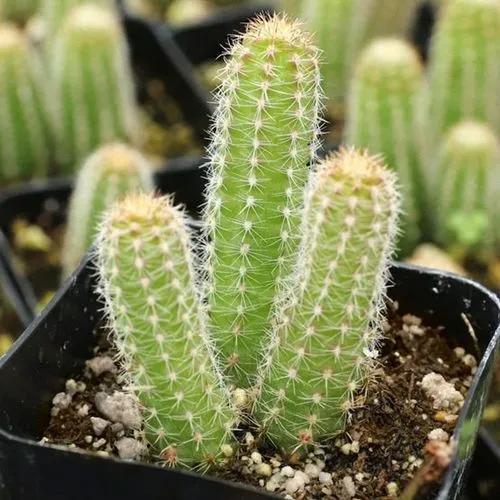Opuntia engelmannii (Engelmann Prickly Pear) is a bushy succulent shrub with light green or bluish green, egg-shaped, fleshy pads, up to 12 in. across (30 cm). It forms sizeable clusters and grows either upright or spreading.
Texas prickly-pear Care
Opuntia engelmannii



The overall form of Opuntia engelmannii is generally shrubby, with dense clumps up to 3.5 metres (11 ft) high, usually with no apparent trunk. The pads are green (rarely blue-green), obovate to round, about 15–30 cm long and 12–20 cm wide. It is cultivated as an ornamental plant, for use in drought tolerant gardens, container plantings, and natural landscaping projects. It goes by a variety of common names, including cow's tongue cactus, cow tongue prickly pear, desert prickly pear, discus prickly pear, Engelmann's prickly pear, and Texas prickly pear in the US, and nopal, abrojo, joconostle, and vela de coyote in Mexico.
How to Care for the Plant

Water

Prickly pears are extremely drought tolerant. Don’t water newly propagated pads for the first month. After that, water every two to four weeks for the first year - twice a month in summer and once a month other times of the year. In most areas, rainfall will be enough to sustain established plants.

Fertilizer

Fertilize young plants with a balanced 10-10-10 fertilizer. For established plants, a 5-10-10 or even 0-10-10 water-soluble fertilizer will promote more flowers and fruit. If you are growing for the pads, use a fertilizer that is high in nitrogen.

Sunlight

The plant performs best in full sun or light shade.

Soil

This plant tolerates a wide variety of soils as long as they are well-draining.

Temperature

The plant can be grown in the areas with the lowest temperatures between 10°F and 20°F or -12.2°C and -6.7°C.

Popularity

524 people already have this plant 60 people have added this plant to their wishlists
Discover more plants with the list below
Popular articles






